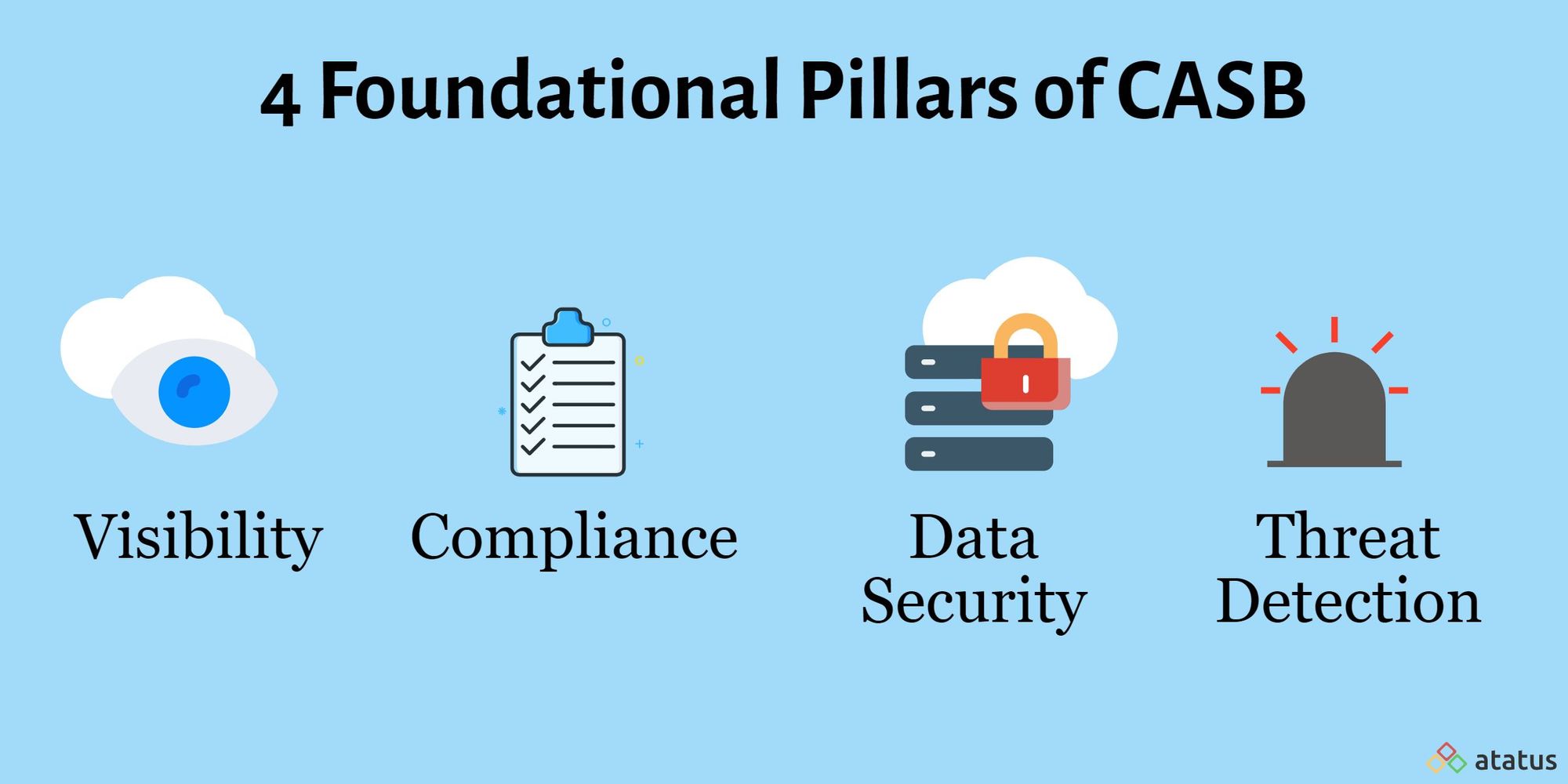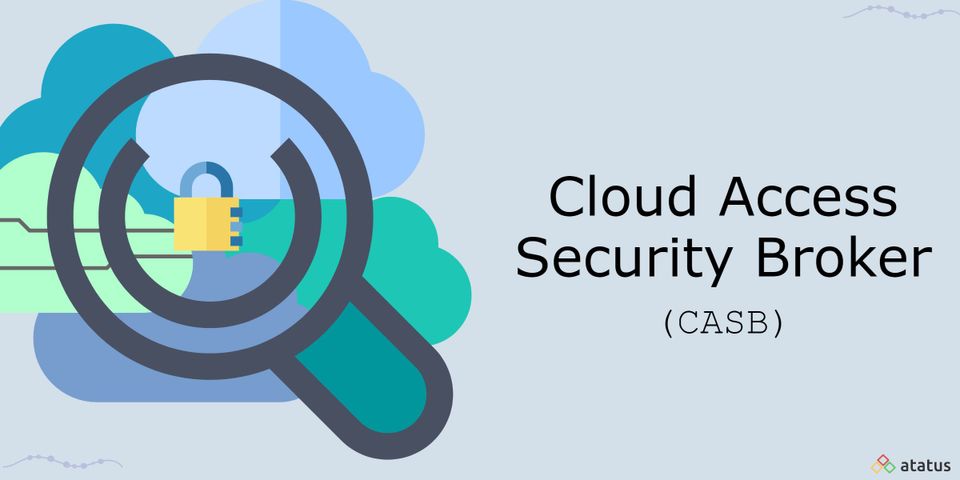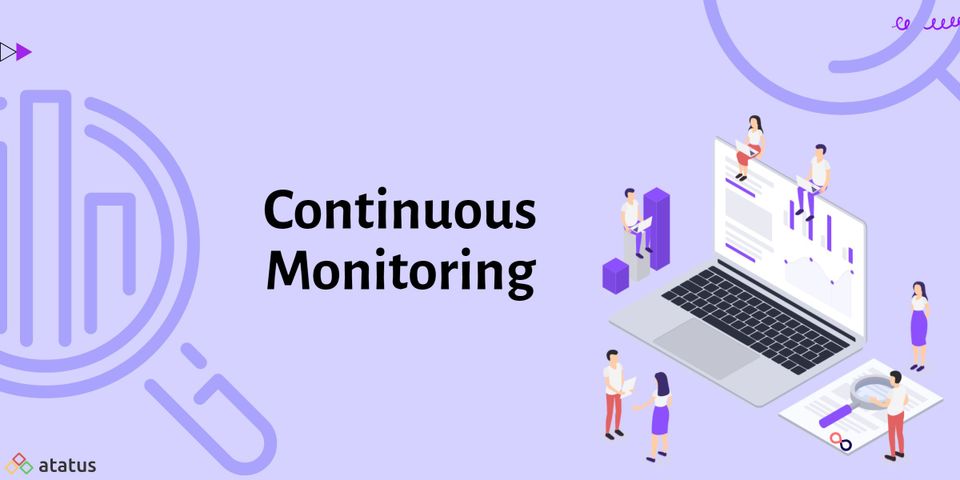Secure cloud application access and use are vital to business operations as organisations evolve and add cloud services to their network. Cloud applications can be used by attackers in a variety of ways to gain access to a corporate network and exfiltrate sensitive data. To protect their users and data, organisations must monitor user behaviour, protect sensitive data, and monitor third-party connected applications.
Here how it’s done:
- What is Cloud Access Security Broker (CASB)?
- Four Foundational Pillars of CASB
- How does CASB Work?
- Why CASB is Important?
What is Cloud Access Security Broker (CASB)?
A cloud access security broker is a cloud-hosted software or on-premises software or hardware that acts as a channel between users and cloud service providers. Software-as-a-service (SaaS), platform-as-a-service (PaaS), and infrastructure-as-a-service (IaaS) settings all benefit from a CASB's ability to close security vulnerabilities. A CASB allows enterprises to extend the reach of their security rules from their existing on-premises infrastructure to the cloud and establish new policies for cloud-specific context, in addition to giving visibility.
CASBs have become an important aspect of organisational security, allowing companies to access the cloud safely while safeguarding sensitive company data. The CASB acts as a policy enforcement centre, combining several types of security policies and applying them to anything your company uses in the cloud—regardless of what kind of device is trying to access it, such as unmanaged mobile phones, IoT devices, or personal laptops.
As a result, the goal of a CASB is to increase an organization's capacity to use cloud services safely and securely. A cloud access security broker (CASB) can be thought of as a "security node" that controls access to an organization's cloud services. It complements, rather than replaces, technologies like enterprise and web application firewalls, Identity as a Service (IDaaS), and secure web gateways (SWGs) as part of an organization's security infrastructure.
Four Foundational Pillars of CASB
CASB solutions are divided into four pillars or roles that maintain cloud services secure for businesses:

#1 Visibility
Organizations must be able to see user behaviour across all of their cloud applications, including sanctioned and unsanctioned applications, known as shadow IT. Since this organization's data is no longer covered by its compliance, governance, and risk regulations, an activity that occurs outside of IT's line of sight is a significant danger of cloud usage. As a result, CASBs are critical for detecting high-risk activity that IT teams may miss.
To assist enterprises to safeguard data, intellectual property, and users, a CASB solution delivers comprehensive visibility of cloud application usage, including device and location information. It also offers cloud discovery analysis, which allows businesses to assess the risk of cloud services and determine whether or not to permit customers access to applications. This enables the company to have more granular control over its cloud environments by granting varying levels of access to users based on their device, location, and function within the company.
#2 Compliance
Organizations today have a wide range of cloud vendor alternatives, and they are likely to use multiple suppliers for different solutions. Regardless of whether they outsource or handle their data themselves, organisations are always responsible for maintaining regulatory compliance in terms of privacy and security.
Cloud access security brokers can assist with cloud compliance by addressing a range of regulations such as HIPAA, as well as regulatory standards such as ISO 27001, PCI DSS, and others. A CASB solution can identify the areas of most risk in terms of compliance and direct the security team as to where they should spend their efforts to remedy them.
#3 Data Security
As cloud usage grows and data loss prevention (DLP) techniques are implemented, organisations must ensure that sensitive data is protected. On-premises DLP solutions are good at securing data, but they can't protect data on the cloud.
To acquire an awareness of sensitive data flowing between and across on-premises and cloud environments, organisations must combine a CASB application with their DLP technology. This allows businesses to keep track of who has access to sensitive data, no matter where it is on their network. Organizations can limit the loss of business information by combining features and technologies such as access control, collaboration control, DLP, encryption, information rights management, and tokenization.
#4 Threat Detection
Through stolen credentials and insider attacks, organisations are increasingly vulnerable to outside hackers. As a result, businesses must be able to recognise and block suspicious activity, even from authorised individuals.
By establishing a thorough regular usage pattern that can be used as a comparison point, CASBs enable businesses to particularly protect against insider attacks from authorised users. CASBs can then detect anomalous behaviour using machine-learning algorithms as soon as a user has improper access or attempts to steal data. They also use tools and strategies to block and prevent malware attacks, such as adaptive access control, dynamic and static malware analysis, and threat intelligence.
How does CASB Work?
CASB can be used as API brokers and/or proxies. Since some CASB functions are dependent on the deployment type, “multimode” CASBs – those that support both proxy and API modes – give you more options for controlling cloud services.
In proxy mode, CASBs are usually focused on security and can be configured as reverse or forward proxies in the data access path, between the cloud service consumer and the CSP. Because reverse-proxy CASBs do not require agents to be installed on endpoints, they may be more suitable for unmanaged (e.g., BYOD) devices, as they eliminate the requirement for configuration modifications, certificate installations, and other similar tasks. They don't have the same level of control over unapproved cloud usage as forward-proxy CASBs, which direct all traffic from managed endpoints, including traffic to unapproved cloud services, implying that some unmanaged devices may slip through the net.
Forward-proxy CASBs frequently necessitate the installation of agents or VPN clients on endpoints. When agents and VPN clients are misconfigured or accidentally turned off, sensitive traffic may not be routed to the CASB, allowing it to slip through inspection without being inspected. CASBs in API mode focus on SaaS applications via APIs provided by those services, including data at rest inspection, log telemetry, policy control, and other management activities. They function well with unmanaged devices, but API-only CASBs are unlikely to meet all essential security features because only mainstream cloud services normally offer API support — and only to varying degrees.
While it's feasible that SaaS suppliers and other CSPs will improve their APIs to close the gap, API-only CASBs aren't capable of meeting scalability and availability needs in the meantime. API-mode CASBs also suffer unsustainable performance degradations when CSPs throttle responses to API queries due to the increasing volume of data shared between users and cloud services. As a result, the proxy mode is still an important feature.
CASBs can be deployed in a corporate data centre, in a hybrid deployment that includes both the data centre and the cloud, or in a cloud-only deployment. On-premises solutions are typically required for organizations that are focused on data-centric protection, or that are subject to privacy legislation or data sovereignty concerns, in order to maintain complete control over security infrastructure. Furthermore, the delegation of responsibility and requirement for the third-party trust that cloud-only CASBs impose through the “Bring Your Own Key” (BYOK) model may violate internal or external policies, and this problematic position naturally extends to security services offered by the CSPs themselves, who may require to whitelist the CASB's IP addresses.
Why CASB is Important?
Data is stored remotely and accessed via the Internet in cloud computing. As a result, cloud users have little control over where their data is stored and how users access it. Cloud data and applications can be accessed from any Internet-connected device and from any network, not only the company's own network.
For example, a user could access a company-managed SaaS software on their personal device across an unprotected network, which is normally not possible with on-premise PCs and servers. Using the cloud also makes it more difficult to keep data private and safe, just as it is more difficult to keep outsiders from listening in on a conversation in a public area instead of in a private room.
Organizations often utilize cloud-based security services to fully protect their data on the cloud. They may use multiple vendors for various services, such as one for DLP, one for identity, one for anti-malware, and so on. However, this approach to cloud security comes with its own set of problems: several contracts must be negotiated independently, security rules must be defined multiple times, and IT must build and manage different platforms, among other things.
Conclusion
Organizations must define their requirements and the objectives that a CASB will assist them in achieving. They must then investigate their choices by gathering information from cybersecurity specialists, conducting reference calls with providers, and doing a thorough proof of concept. The ability of the CASB to evolve with the company and safeguard it as the threat landscape changes is a significant factor. The correct CASB supplier will keep the organization's cloud compliance and security policies up to date and evolving.
Monitor Your Entire Application with Atatus
Atatus provides a set of performance measurement tools to monitor and improve the performance of your frontend, backends, logs and infrastructure applications in real-time. Our platform can capture millions of performance data points from your applications, allowing you to quickly resolve issues and ensure digital customer experiences.

Atatus can be beneficial to your business, which provides a comprehensive view of your application, including how it works, where performance bottlenecks exist, which users are most impacted, and which errors break your code for your frontend, backend, and infrastructure.





